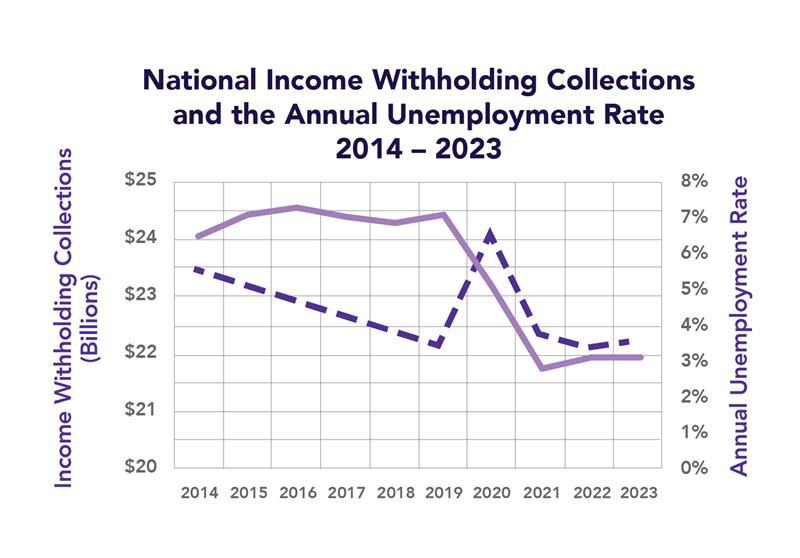The national unemployment rate has returned to pre-pandemic levels, leaving business closures and a historic spike in unemployment in the rearview mirror. Yet total child support collections — especially those from income withholding — continue to lag. With income withholding accounting for 70% or more of total collections, states should consider various ways to address the challenges presented by noncustodial parents who work in the gig economy or are unemployed or underemployed.
A closer look at why this is happening
National income withholding collections held steady at just under $25 billion through 2019, then swiftly and significantly decreased by nearly $3 billion during the COVID-19 pandemic. There’s often a lag between changes in unemployment rates (dashed black line) and the impact on collections (solid purple line). Not surprisingly, after the national unemployment rate spiked in 2020, income-withholding collections dropped 12% below the prior year’s average.
However, as the unemployment rate returned to pre-pandemic levels, income withholding collections have not yet rebounded. Our analysis of the data points to three main reasons: people working in the gig economy, unemployment, and underemployment. In the following sections, we share strategies for addressing the unique challenges of each situation — with the goal of increasing collections through income withholding.


